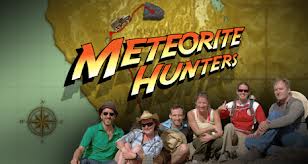
 HOW TO HUNT A SPACE ROCK – Peter Willis and his team of researchers at JPL had a problem. Actually, more like they had a solution that needed a problem. Confused? Let’s let Peter give it a shot…
HOW TO HUNT A SPACE ROCK – Peter Willis and his team of researchers at JPL had a problem. Actually, more like they had a solution that needed a problem. Confused? Let’s let Peter give it a shot…
“My team and I came up with a new lab on a chip,” said Willis, a scientist at JPL’s Microdevices Lab. “It essentially miniaturizes an automated sample processing and analysis instrument that could be put aboard future spacecraft and sent to distant planets, moons and asteroids. One challenge we have is finding new and interesting samples to try our chip on.”
On the evening of Aug. 21, 2012, a large fireball that turned night into day was reported over a mountain range halfway between Reno and Salt Lake City. By convention, the meteorite was named after the nearest town or prominent geographic feature.
“We first heard about the Battle Mountain meteorite on the morning of Wednesday, Sept. 5,” said Willis. “We were on the road to Nevada the next afternoon.”
The challenge with meteorites is that that the longer these bit of space debris reside on Earth, the more they are exposed to the corrosive effects of Earthly elements. JPL’s miniature lab on a chip was tasked with looking for chemical markers and amino acids that originated in space, not manufactured naturally here on Earth. To give their new instrument a true test run, Willis’ team needed a factory-fresh piece of the heavens.
After a night at a local motel, Willis, along with fellow JPLers Amanda Stockton, Josh Schoolcraft, Fernanda Mora and Morgan Cable, packed hiking gear and a whole bunch of water into their SUV and struck out for Battle Mountain, Nevada.
Working with weather radar data as well as testimonials from those who witnessed the fireball, the team generated an impact zone to concentrate their search.
“The first day, we covered 6 miles of mountainous terrain on foot but didn’t find anything but terrestrial rocks and the occasional whiptail lizard,” said Willis. “The next day was going to be our last shot, so we planned to drive much deeper into the estimated impact zone. The problem was, the most negotiable route ended up taking us through an active mine claim. We quickly found out that miners are not much interested in rocks from space.”
“We were fixing a flat when they drove up and told us to turn around,” said Willis. “We needed to get the tire repaired anyway, so we headed back to town to regroup and look for a different route which didn’t cross mining land.”
The new route made full use of their SUV’s 4-wheel drive capability. The team negotiated narrow, sloping, unpaved, sand-flooded switchbacks before arriving near the center of their estimated impact zone. For the next three hours, the team fanned out in different directions, but found nothing extraterrestrial in nature. By 4:30 p.m., it was getting to be time to wrap things up. JPL’s Josh Schoolcraft had just begun the final leg of his search…when he saw it. Sitting there on the mountainside, amidst a tangle of sun-bleached dirt, pebbles and scrub was a jet-black rock.
“I knew right away it was what we were looking for,” said Schoolcraft. “It was a carbonized, unweathered black mass, unlike anything else we had seen in our two days of searching. It clearly had not been there for very long.”
A 1.4-pound fragment of the Battle Mountain meteorite is currently undergoing analysis by the team’s lab-on-a-chip systems at JPL.


Be the first to comment